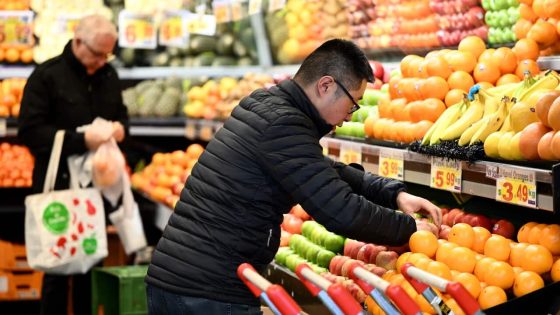Key Points
- The Australian Bureau of Statistics has said inflation slowed to 3.5 per cent in the year to July.
- That figure is down from 3.8 per cent in June, but is slightly higher than the 3.4 figure economists had predicted.
- Commonwealth-funded energy rebates drove a fall to 5.1 per cent in the year to July, down from 7.5 per cent in June.
Inflation rose by 3.5 per cent in the year to July — down from 3.8 per cent in June, but higher than the 3.4 per cent economists had predicted ahead of the announcement.
The Australian Bureau of Statistics (ABS) says the “most significant” price rises were housing at 4.4 per cent, food and non-alcoholic beverages at 3.8 per cent, alcohol and tobacco at 7.2 per cent and transport at 3.4 per cent.
The consumer price index (CPI) is a key indicator of inflation and measures the percentage shift in the cost of goods and services consumed by households.
The ABS uses data from businesses to track the changes in the price which gives an idea of how much families are spending on groceries, housing and public transport.
The CPI is collected solely from Australia’s capital cities and does not measure price changes in regional and remote areas.
Households spending less on electricity, but more on other utilities
A key indicator of household spending is the cost of electricity, which fell 5.1 per cent in the 12 months to July, down from a 7.5 per cent rise in June.
ABS acting head of prices statistics Leigh Merrington says , which were rolled out in several states in July.
In addition, state-specific rebates were introduced in Western Australia, Queensland and Tasmania.
“Altogether these rebates led to a 6.4 per cent fall in the month of July. Excluding the rebates, Electricity prices would have risen 0.9 per cent in July,” Merrington said.
The prices of some other utilities went up.
Gas prices rose 2.7 per cent in the 12 months to July, which the ABS attributes to higher network and wholesale gas prices. The price of gas was 5.7 per cent higher than in the previous month.
Automotive fuel prices rose 4 per cent in the 12 months to July, down from the increase of 6.6 per cent for the year to June.
Groceries are costing more, but dairy bucks the trend
Food and alcoholic beverages were 0.5 per cent higher than in June, a 3.8 per cent increase compared to July last year.
The main drivers were fruit and vegetables, which were 7.5 per cent higher, the largest annual rise since December 2022.
The ABS linked the increase to higher prices for strawberries, grapes, broccoli and cucumbers.
Food products not elsewhere classified, which includes products such as coffee and honey, rose 4.3 per cent.
However, there were price falls for cheese in the last 12 months, leading to a slight decrease of 0.2 per cent in the cost of dairy and related products.
Is an interest rate cut on the horizon?
The Reserve Bank of Australia (RBA) closely monitors inflation and it’s a primary consideration in its decisions to lower or increase interest rates.
Australia has an official inflation target rate of 2-3 per cent and the bank has been seeking to bring inflation back down by increasing interest rates. After the RBA increased interest rates to 4.35 per cent in 2023, it has remained unchanged throughout this year.
Despite Wednesday’s announcement from the ABS, the central bank has been discouraging expectations of an interest rate cut before the end of 2024.
Earlier in August, RBA governor Michele Bullock warned that inflation was falling too slowly to justify cutting rates until next year.

